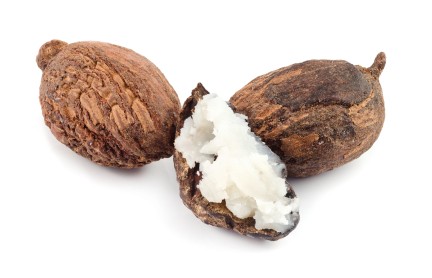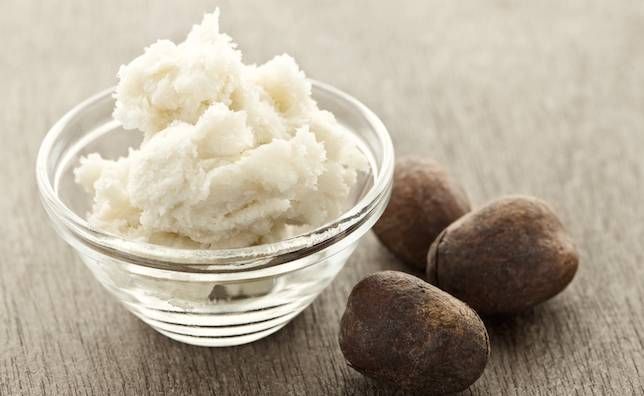VANILLA BEANS | SOYBEAN OIL | SOYMEAL & CAKE | COCOA BEANS | COFFEE BEANS
Uganda Shea Butter Guide
Planning to start Shea Butter agribusiness project in Uganda?
...or you represent a Cosmetic/Chocolate/Pharmaceutical Manufacturing Company and looking for a reliable supplier for unrefined Organic shear butter from Africa?
...Or you're just searching Online to shop/buy Shea Butter in Uganda for personal use...?!
Well, if this describes you or your need , then take sometime to read this Uganda farming guide on how your can successfully grow and profit from Shea Butter in Africa Uganda.
 Shea Nuts for Shea Butter Extraction in Uganda
Shea Nuts for Shea Butter Extraction in UgandaShea butter is an off-white or ivory-colored fat extracted from the nut of the African shea tree (Vitellaria paradoxa).
In Uganda Shea butter or Moo yao as it is known in Lango and Acholi sub-regions is an indigenous fruit tree that grows mostly in the northern part of the country.
Shea butter is a triglyceride (fat) derived mainly from stearic acid and oleic acid.
It is widely used in cosmetics as a moisturizer, salve or lotion. Shea butter is edible and is used in food preparation in Africa.
Occasionally, the chocolate industry uses shea butter mixed with other oils as a substitute for cocoa butter, although the taste is noticeably different.
The English word "shea" comes from s’í, the tree's name in the Bambara language of Mali.
A shea nut tree needs an average of seven to eight years to produce the first harvest.
However, when faced with adverse environmental factors like bush fires, the shea nut tree may become stunted and take up to 15 years to bear fruit.
During harvest, a shea nut tree can yield up to 20kgs of fresh fruit which produces about 5kgs of dry kernel that are made up of 42 to 48 percent oil.
The fruits resemble plums and take about four to six months to fully ripen.
On this Uganda agribusiness guide you will find information about:
How to grow Shea nut trees in Uganda
How to Harvest and Extract Shea Butter in Africa
Where to Buy Shea Butter in Uganda
You also have the opportunity to ask the Agribusiness guide questions about Shea butter in Africa.
The History of Shea Butter
Accounts from as early as Cleopatra's Egypt speak of caravans bearing clay jars of valuable shea butter for cosmetic use.
The funeral beds of early kings were carved in the wood of shea trees.
Shea butter's skin care and healing properties were first harnessed thousands of years ago.
The history of shea as a precious commodity can be traced back to ancient Egypt, where shea butter was and continues to be used to protect the hair and skin in the fierce sun and the hot dry winds of African deserts and Savannah.
Contact us to buy Organic Shea Butter from Uganda
How to plant Shea Butter Trees in Uganda
The shea nut tree typically grows wildly though more farmers in Uganda have begun growing it domestically. When it is mature, it bears fruit once in a year.
Clear an area of well drained soils preferably sandy or clay.
It is best that you sow the seeds towards the end of the rainy season to ensure proper drainage.
The seeds should be half buried with the eyes facing upward.
The spacing between the seeds placed in the soil should be between two to three meters.
Apply organic fertilizer to the soil. We recommend that you use Organic fertilizers because inorganic fertilizers destroy soil quality.
Water your seeds in the early stages to ease absorption of nutrients from the soil and to protect the soil from other dry conditions.
Remove weeds around the seedlings regularly to avoid competition.
Smoke your Shea nut trees frequently to protect them from pests.
Contact us to buy Organic Shea Butter from Uganda
How to Harvest, Extract and Refine Shea Butter
The traditional method of preparing unrefined shea butter consists of the following steps:
The seeds fall by themselves to the ground and are collected in baskets and taken for processing.
De-pulping is done to get rid of the sweet fleshy fruit by boiling the fruit. They are then left to ferment.
The fermented fruits are then sun-dried for about 10 days at temperatures below 50°C.
Separating/cracking: The outer pulp of the fruit is removed when dry. The nut, which is the source of shea butter, must be separated from the outer shell. This is a social activity, traditionally done by women elders and girls who sit on the ground and break the shells with small rocks.
Crushing: To make the shea nuts into butter, they must be crushed. Traditionally, this is done with mortars and pestles. It requires lifting the pestles and grinding the nuts into the mortars to crush the nuts so they can be roasted.
Roasting: The crushed nuts are roasted in huge pots over open wood fires. The pots must be stirred constantly with wooden paddles so the butter does not burn. The butter is heavy and stirring it is hot, smoky work, done under the sun. This is where the slight smoky smell of traditional shea butter originates.
Grinding: The roasted shea nuts are ground into a smoother paste; water is gradually added and the paste is mixed well by hand.
Separating the oils: The paste is kneaded by hand in large basins and water is gradually added to help separate out the butter oils. As they float to the top, the butter oils, which are in a curd state, are removed and excess water squeezed out.
The butter oil curds are then melted in large open pots over slow fires. A period of slow boiling will evaporate any remaining water.
Collecting and shaping: The shea butter, which is creamy or golden yellow at this point, is ladled from the top of the pots and put in cool places to harden. Then it is formed into balls.
Industrially, a mechanical sheller such as the universal nut sheller may be used. The refined butter may be extracted with chemicals such as hexane or by clay filtering.
Contact us to buy Organic Shea Butter from Uganda
Shea Butter Classification
The United States Agency for International Development and other companies have suggested a classification system for shea butter separating it into five grades:
A (raw or unrefined, extracted using water)
B (refined)
C (highly refined and extracted with solvents such as hexane)
D (lowest uncontaminated grade)
E (with contaminants).
Commercial grades are A, B, and C. The color of raw (grade A) butter ranges from cream (like whipped butter) to grayish yellow. It has a nutty aroma which is removed in the other grades. Grade C is pure white. While the level of vitamin content can be affected by refining, up to 95% of vitamin content can be removed from refined grades (i.e., grade C) of shea butter while reducing contamination levels to undetectable levels.
Contact us to buy Organic Shea Butter from Uganda
Composition and properties of Shear Butter
Shea butter extract is a complex fat that in addition to many nonsaponifiable components (substances that cannot be fully converted into soap by treatment with alkali) contains the following fatty acids: oleic acid (40-60%), stearic acid (20-50%), linoleic acid (3-11%), palmitic acid (2-9%), linolenic acid (<1%) and arachidic acid (<1%).
Shea butter melts at body temperature. Proponents of its use for skin care maintain that it absorbs rapidly into the skin, acts as a "refatting" agent, and has good water-binding properties.
Contact us to buy Organic Shea Butter from Uganda
Uses of Shea Butter
Shea butter is mainly used in the cosmetics industry for skin- and hair-related products (lip gloss, skin moisturizer creams and emulsions, and hair conditioners for dry and brittle hair).
It is also used by soap makers, typically in small amounts (5-7% of the oils in the recipe), because it has plenty of unsaponifiables, and higher amounts result in softer soaps that have less cleaning abilities.
Some artisan soap makers use shea butter in amounts to 25% - with the EU regulating the maximum use around 28%, but it is rarely the case in commercially produced soap due to its high cost against oils like palm or pomace (olive).
It is an excellent emollient for people who suffer dry skin conditions. No evidence shows it is a cure, but it alleviates the pain associated with tightness and itching.
In Uganda and other African shea butter is used for cooking oil, for frying and making of stew. Shea Butter is also used as water proofing wax, for hairdressing, for candle-making.
It is used by makers of traditional African percussion instruments to increase the durability of wood (such as carved djembe shells), dried calabash gourds, and leather tuning straps.
Shea butter can be an ingredient of organic broth.
Shea Butter is incorporated into assorted tissue products, such as toilet paper.
Shea butter is sometimes used as a base for medicinal ointments. Some of the isolated chemical constituents are reported to have anti-inflammatory, emollient, and humectant properties.
Shea butter has been used as a sun blocking lotion and some of its components "have limited capacity to absorb ultraviolet radiation".
In Nigeria, Shea butter is used for the management of sinusitis and relief of nasal congestion.
It is massaged into joints and other parts of the body where pain occurs.
It is used as a moisturizer as it is rich in vitamin A, E and F which soothes, balances and hydrates the skin.
Shea butter speeds up healing of wounds.
It promotes growth of healthy tissues in ulcerous wounds
It is used to treat baby circumcision wounds
Buying Shea Butter from Uganda
 Buying Shea Butter in Uganda Africa
Buying Shea Butter in Uganda AfricaOr Use the Contact Address:
africaug.com
PLOT 30A, BOMBO ROAD
NSEGUMIRE PLAZA
KAMPALA, UGANDA
Or
Call: +256780481008
Have a Question or Great Story About This Plant Guide?
Do you have a Question or Comment about this plant Guide? Then Share it!
If you haven't yet found what you were looking for or you need detailed information about the subject matter on this page then... feel free to ask our business travel consultants. |




